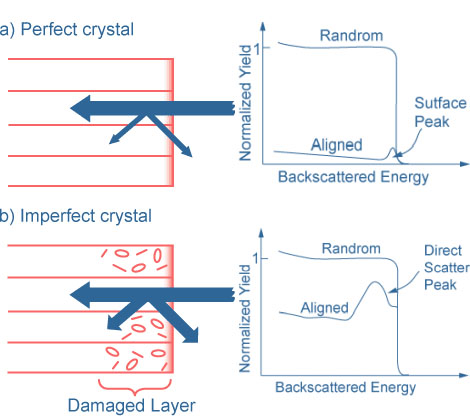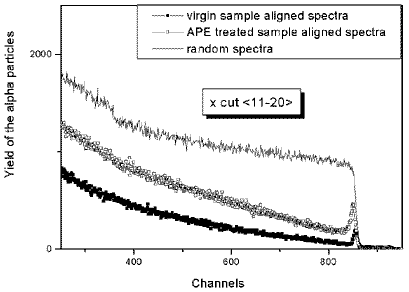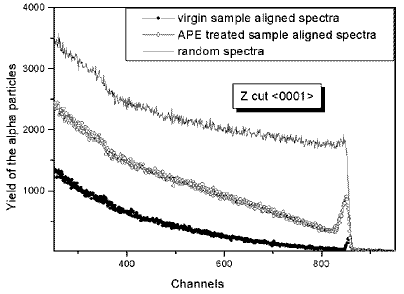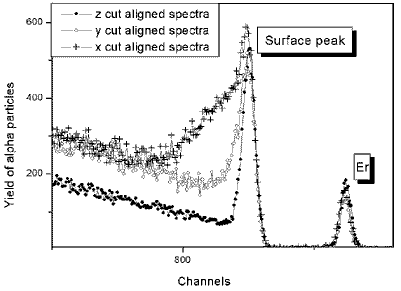
RBS-channeling
RBS-channeling spectrometry - enables us to investigate crystalline materials. The signal of the impurity and host lattice in RBS spectra is separated by scattering kinematics . The angular yield curve (scan) is obtained by monitoring the yield of the impurity and host lattice along the channeling axis using ion beam impact angle changing. From the angular yield curves of the axial channels in virgin material we obtain the impurity position in the measured cut. In order to determine the lattice position of impurities several relevant crystallographic directions have been selected.

Example of investigated systems:
See also here and in the article: "Characterization of Er: LiNbO3 and APE:.Er:LiNbO3 by RBS-channeling and XRD techniques" (A. Mackova, R. Groetzschel, F. Eichhorn, P. Nekvindova, J. Spirkova, Surface and Interface Analysis, 36 (2004) 949-951).
 Fig. 1: Comparison of virgin Er:LiNbO3 sample and APE:Er:LiNbO3 treated sample (z-cut). a) RBS-channelling aligned spectra
Fig. 1: Comparison of virgin Er:LiNbO3 sample and APE:Er:LiNbO3 treated sample (z-cut). a) RBS-channelling aligned spectra

Fig. 2: Comparison of virgin Er:LiNbO3 sample and APE:Er: LiNbO3 treated sample (y- cut). a) RBS-channelling aligned spectra

Fig. 3: RBS-channelling aligned spectra of x, y, z cut LiNbO3 samples modified by Er localised doping

